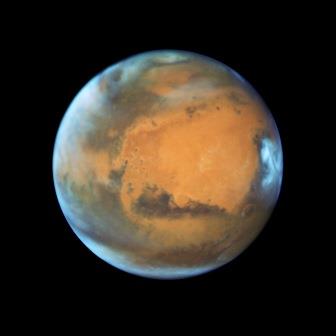Watch Mars make its closest approach to Earth in 10 years
Mars is about to make its closest approach to Earth in the space of a decade… and this time around, it’ll be trivially easy to watch this rare celestial event. Slooh is offering a live stream that will kick off around 9PM Eastern, when the sky should be dark enough to observe the Red Planet in vivid detail (the closest approach is technically at 5:34PM, around when this story went live). Gizmodo notes that you can also get a first-hand look if you point a telescope to the right of the bright star Antares.
It’s important to remember that “close” is a relative term here. Earth and Mars will still be 46.8 million miles apart, so you aren’t about to spot the details of Olympus Mons with your naked eyes. However, the shortened distance makes it comparatively trivial to get a good peek without resorting to particularly advanced optics. Given that most of our Solar System neighbors are too far away for this kind of observation, it’ll likely be worth watching for at least a brief moment.
(42)











